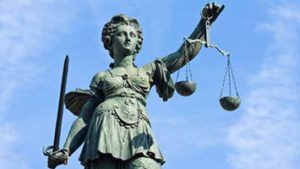 Justice Patterson continued in relevant part: N.J.R.E. 701 was adopted to ensure that lay opinion is based on an adequate foundation. As amended in 2019, the rule provides that lay opinion testimony “may be admitted if it: (a) is rationally based on the witness’ perception; and (b) will assist in understanding the witness’ testimony or determining a fact in issue.” N.J.R.E. 701. The rule thus imposes two distinct requirements for the admission of lay opinion testimony.
Justice Patterson continued in relevant part: N.J.R.E. 701 was adopted to ensure that lay opinion is based on an adequate foundation. As amended in 2019, the rule provides that lay opinion testimony “may be admitted if it: (a) is rationally based on the witness’ perception; and (b) will assist in understanding the witness’ testimony or determining a fact in issue.” N.J.R.E. 701. The rule thus imposes two distinct requirements for the admission of lay opinion testimony.
In order for lay opinion testimony to satisfy the first component of N.J.R.E. 701, the witness must testify based on knowledge personally acquired through the witness’s own senses, rather than on the hearsay statements of others. The witness need not have witnessed the crime or been present when the photograph was made to offer admissible testimony. The trial court erred when it found that Annese’s testimony would fall short of N.J.R.E. 701’s first requirement because she did not witness the shooting, see defendant in the Buick, or possess “firsthand” knowledge that defendant was in the Buick. N.J.R.E. 701’s “perception” prong imposes no such requirement.
Annese became familiar with defendant’s appearance by meeting with him on more than thirty occasions during his period of parole supervision. Her identification of defendant as the front-seat passenger in the surveillance photograph was “rationally based on her perception,” as N.J.R.E. 701 requires. The State satisfied the first prong of N.J.R.E. 701.
N.J.R.E. 701’s second prong requires that lay opinion testimony will assist the jury “in understanding the witness’ testimony or determining a fact in issue.” N.J.R.E. 701(b). Such testimony must assist the trier of fact either by helping to explain the witness’s testimony or by shedding light on the determination of a disputed factual issue. A witness may not offer lay opinion on a matter as to which the jury is as competent as the witness to form a conclusion.
With these additional alleged facts, we begin to see some holes in the majority’s logic. If the identification of the defendant were made based on a photograph, law enforcement was certainly justified in using that identification as a lead. However, the defendant has a strong argument that the jury is every bit as capable as the parole officer in comparing the defendant to the photograph.
